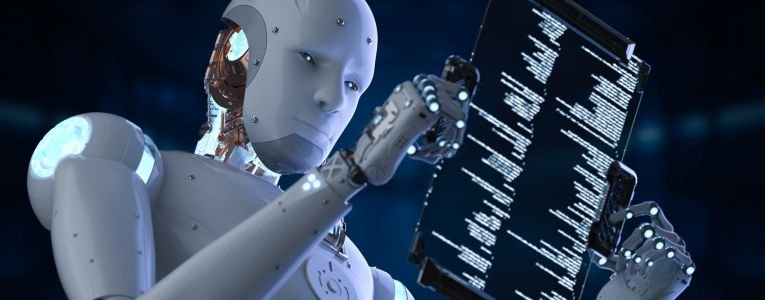Artificial Intelligence
How Generative AI Can Harm Learning: Risks, Limitations, and the Amazing Path Forward in 2024
Generative AI can harm learning by disrupting traditional educational practices and negatively impacting students’ intellectual development. While these tools are increasingly integrated into educational systems for their benefits, there are critical drawbacks that educators and institutions must address. From misinformation to biases, generative AI brings challenges that threaten to undermine effective learning and academic integrity. In this article, we explore the risks, recent trends, and strategies for responsible AI use in education.
What Is Generative AI and Its Role in Education?
Contents
Generative AI refers to systems that can produce content—text, images, or even videos—based on input data. These tools have transformed many sectors, including education, by automating processes, assisting with learning tasks, and providing personalized educational resources. For instance, platforms like ChatGPT, DALL-E, and other AI models are now used for tutoring, creating study materials, and even grading assignments.
However, despite their benefits, there are growing concerns about how generative AI can harm learning environments. These concerns range from promoting laziness among students to generating false or biased information. Understanding these risks is essential for educators who want to use AI responsibly.
How Generative AI Can Harm Learning

1. Misinformation and “Hallucination”
One of the most significant issues with generative AI is its tendency to produce incorrect or misleading information, often referred to as “hallucination.” AI models like ChatGPT generate content based on patterns and data, but they can sometimes fabricate information that appears factual. For example, these models might create fake citations or provide inaccurate details in academic essays. As highlighted by Reading University’s AI Guide, such behavior can lead to misinformation being propagated, ultimately affecting students’ learning and knowledge base.
2. Impact on Critical Thinking and Creativity
Generative AI can also impede critical thinking skills. When students rely on AI to generate answers or complete assignments, they miss out on the opportunity to engage deeply with the subject matter. According to the Learning Scientists, overreliance on tools like ChatGPT can reduce the need for students to think critically and independently. This reliance can lead to a lack of creative problem-solving skills, which are essential for academic and professional success.
3. Academic Integrity and Plagiarism
AI’s ability to produce coherent and convincing content has made it easier for students to cheat or plagiarize. Educators have found it challenging to detect AI-generated content, leading to concerns about maintaining academic integrity. With AI-generated essays becoming more common, it is increasingly difficult for teachers to distinguish between original student work and content produced by machines. This trend risks devaluing educational qualifications and hampers genuine learning experiences.
4. Bias Amplification
AI models are trained on large datasets that often contain biases. When these models generate content, they can inadvertently amplify existing biases, leading to discriminatory or unethical outputs. For example, if an AI model learns from biased data, it might produce content that perpetuates stereotypes or misinformation, affecting students’ perceptions and understanding. Globant Blog discusses how generative AI can lead to bias amplification, which is particularly harmful in educational settings where inclusivity and equity are crucial.
5. Lack of True Creativity
While generative AI can produce impressive outputs, it lacks the ability to truly innovate or think creatively. The content generated by these tools is based on existing patterns and does not involve genuine creative thinking. As Lingarogroup points out, AI’s inability to come up with new, original ideas means that students who rely too heavily on these systems may not develop the creativity needed to excel in their fields.
Recent Trends in Generative AI Use in Education
In 2024, the use of generative AI in education has grown exponentially. From AI tutors to automated grading systems, educational institutions are finding innovative ways to incorporate these technologies into their curricula. However, as these tools become more sophisticated, the risks they pose also become more pronounced. Many universities are now developing guidelines to help educators understand how to use AI responsibly, ensuring it complements rather than replaces traditional learning methods.
Addressing the Risks: How to Use Generative AI Responsibly in Education
1. Promote Critical Thinking
Educators should encourage students to use AI as a supplementary tool rather than a crutch. Students can be taught to critically evaluate the information provided by AI and cross-reference it with reliable sources. By fostering an environment of inquiry and skepticism, educators can ensure that students remain engaged and thoughtful learners.
2. Implement Strict Academic Integrity Policies
To combat plagiarism, educational institutions need to develop robust policies that address the use of AI-generated content. Plagiarism detection software must be updated to identify AI-assisted writing, ensuring that students submit their own work. Schools can also emphasize the importance of integrity, helping students understand why relying on AI for assignments undermines their education.
3. Ensure Ethical AI Training
AI developers must be responsible for training their models on diverse and unbiased datasets. By focusing on ethical AI development, companies can minimize the risk of perpetuating harmful stereotypes and misinformation. Educational institutions can advocate for these practices by choosing AI tools that adhere to ethical standards and are transparent about their data sources.
Conclusion
Generative AI is undoubtedly transforming education, offering benefits like personalized learning and efficiency. However, the risks it poses to critical thinking, academic integrity, and unbiased information cannot be ignored. As we continue to integrate AI into our educational systems, it is crucial to understand and address these challenges. By promoting responsible AI use, educators can help students harness the power of technology without compromising the quality of their learning.
For more insights on how AI is transforming various industries, check out AI in Business: Transforming Industries and learn how startups are navigating the AI landscape in AI Startup Partner Compass.